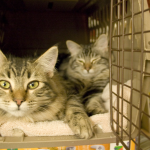Navigating pet insurance can feel overwhelming, especially when deciphering what it covers and what it doesn’t. The “best” coverage depends on individual needs. As you explore plans, fundamental questions arise:
- Identifying your pet’s needs
- Ensuring the policies under consideration align with those needs
While veterinarians offer valuable insights into pet insurance and suitable plans, here’s a breakdown of what pet insurance generally covers.
Pet Insurance Coverage Overview
The specifics of pet insurance coverage vary based on your chosen plan. Unlike human insurance, where a variety of medical expenses fall under one plan, pet insurance usually offers three main categories:
- Accident-only pet insurance plans
- Accident and illness plans
- Wellness/preventive pet insurance plans
Accident-Only Pet Insurance
As the name suggests, accident-only plans cover costs related to accidents and specific emergency veterinary expenses. However, it’s crucial to read the fine print. Definitions of “accident” can vary between policyholders and insurance companies.
For instance, while an accident might include your dog getting hit by a car after running out the door, an unexpected chicken bone consumption may not fall under this coverage. Such plans, being more restricted, tend to be less expensive, yet understanding deductibles, caps, and reimbursement percentages is vital for managing out-of-pocket expenses.
Accident and Illness Coverage
This comprehensive plan encompasses both accidents and various health conditions. From infections to chronic ailments like diabetes or cancers, accident and illness plans typically cover diagnostic and treatment expenses for these veterinary visits. While more expensive than accident-only plans, they offer broader coverage, often with different deductibles, caps, and reimbursement percentages.
Wellness Plans
These plans usually cater to routine preventive care like vaccinations, checkups, heartworm testing, and parasite prevention medications. They might be add-ons to traditional insurance or standalone policies, allowing you to spread costs across the year and encourage regular preventive care.
Understanding What Pet Insurance Excludes
Reading the fine print is essential. Exclusions may include congenital or hereditary conditions based on breed, issues arising during waiting periods, and some specific therapies or treatments.
Coverage and Reimbursement Considerations
Reimbursements depend on plan type, deductible, reimbursement percentage, and annual or per-condition caps. Deductibles can be annual or per-incident, with varying reimbursement percentages. Policies might also have annual reimbursement caps or condition-specific limitations.
Waiting Periods
Pet insurance often has a waiting period between policy purchase and actual coverage initiation. This ensures no immediate expensive health needs prompted the insurance purchase.
Optimizing Pet Insurance Benefits
To maximize pet insurance benefits, consider your pet’s life stage, health status, and available plan options. Remember, purchasing insurance before your pet faces health issues is crucial.
Consulting your vet and conducting research upfront can prevent later misunderstandings and unexpected expenses.




